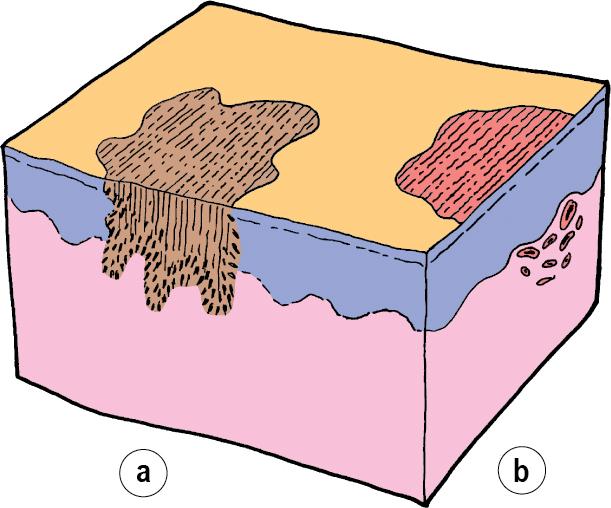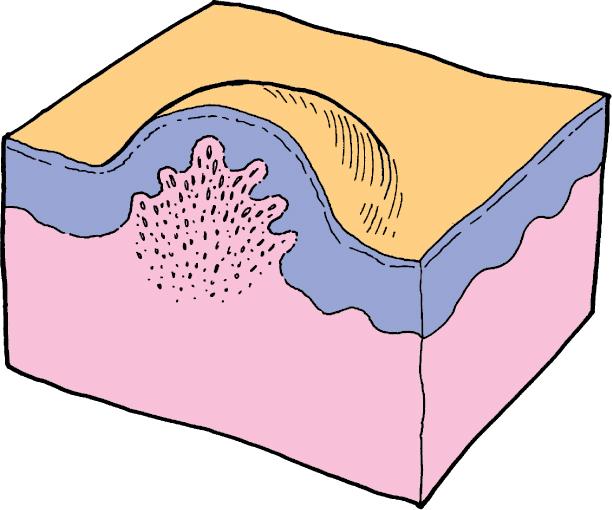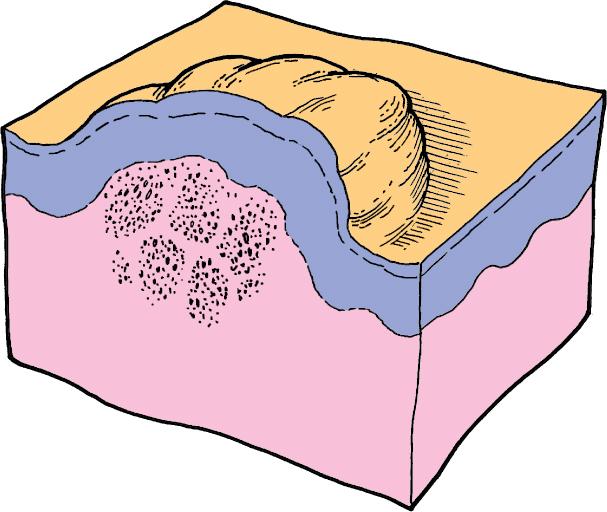Physical Address
304 North Cardinal St.
Dorchester Center, MA 02124
Dermatology has a vocabulary that is quite distinct from that of other medical specialties and without which it is impossible to describe skin disorders (a skill vital in dermatologist training curricula). A lesion is a general term for an area of disease, usually small. An eruption ( or rash) is a more widespread skin involvement, normally composed of several lesions, which may be the primary pathology (e.g. papules, vesicles or pustules) or due to secondary factors such as scratching or infection (e.g. crusting, lichenification or ulceration). Below is a selection of other commonly encountered dermatological terms. Online, clinical examples of terms can be found in the Merck Manuals (access via http://www.merckmanuals.com/ ). The shapes of skin lesions can give a clue as to the diagnosis (see also Table 9.1 ).
A macule is a localized area of colour or textural change in the skin. Macules can be hypopigmented, as in vitiligo; pigmented, as in (a) a freckle; or erythematous, as in (b) a capillary haemangioma.

A papule is a small solid elevation of the skin, generally defined as <5 mm in diameter. Papules may be flat topped, as in lichen planus; dome-shaped, as in xanthomas; or spicular if related to hair follicles.

Similar to a papule but larger (i.e. >5 mm in diameter), nodules can involve any layer of the skin and can be oedematous or solid. Examples include a dermatofibroma (below) and secondary deposits.

Become a Clinical Tree membership for Full access and enjoy Unlimited articles
If you are a member. Log in here